Understanding the Value of Assets, Financing, and Cash Flow Savings
Unlocking Business Growth: The Importance of Assets and Financing
Successful business owners know the crucial distinction between assets and liabilities. Knowing how and when to deploy cash versus reserving it is vital. This blog delves into the basics of assets, their importance, and strategies for leveraging them effectively to boost business profitability. We’ll also explore the concept of Management Service Organizations (MSOs) and their benefits for business owners.
Summary
Business owners who understand and manage their assets effectively can significantly enhance their profitability and growth. This blog covers the essentials of assets, including tangible and intangible types, the importance of a balance sheet, strategic financing, and the benefits of utilizing MSOs.
The Basics of Business Profitability
At its core, a business must offer goods or services that customers will buy at a profit. Achieving and maintaining profitability is crucial. For those who navigate the ‘death valley’ from startup to initial profitability, the next challenge is scaling while maintaining profitability. Assets play a crucial role in this phase by accelerating growth and adding value to your business.
What is an Asset?
An asset is anything expected to generate financial value in the future. Assets can be physical, like inventory and equipment, or financial, like shares and land rights. They can also be intangible, such as a brand, patent, or trade secrets. Assets are used to create products, deliver services, or rent out to other companies, enabling business growth and eventually allowing for a profitable sale.
Tangible Assets
Tangible assets are those you can see or touch. Examples include:
- Equipment
- Land
- Inventory
- Shop Fit-out
- Marketing Materials
- Sales Channels
These assets require time and money to establish and help your business attract and serve customers. For example:
- A café needs premises, a nice fit-out, a good coffee machine, and a commercial kitchen.
- A consultancy might need office supplies, computers, and a good website.
- A chocolate factory requires industrial machinery, storage facilities, trucks, and inventory.
Intangible Assets
Intangible assets, though invisible, are essential for success. Examples include:
- Brand
- Reputation
- Intellectual Property
- Network
- Systems
- Methodology
- Patents
These assets can make or break a business. For instance:
- A café needs a good reputation and regular customers; otherwise, it’s just an empty room with a coffee machine.
- A consultancy must be known for its unique skill set or methodology to charge high rates.
- A chocolate factory needs a proven recipe and an appealing brand to attract customers.
Understanding Your Balance Sheet
Assets are listed on your balance sheet, which measures the value of what your business owns. Companies constantly update asset values to gauge their strength and decide whether to be concerned or excited. Asset values fluctuate based on various factors; some appreciate over time, while others depreciate.
Key Questions to Consider
When evaluating assets, consider these questions:
- What type of asset are you buying – tangible or intangible?
- Is the asset high quality with an easily calculated fair market value?
- How will the asset create value for your business?
- What is the asset’s lifespan?
- Can the asset provide tax savings through depreciation?
- How will you pay for this asset?
Financing vs. Cash Purchase
Preserving cash for liquidity and growth is crucial, and financing is often a preferred option. Here’s why:
Practical Examples of Using Bank Financing for Improved ROI
Example 1: Expanding a Café
Imagine a café owner wants to purchase a new commercial espresso machine costing $50,000. Using bank financing, the owner can secure a loan with an annual interest rate of 6%. Instead of using $50,000 in cash, the owner can use the loan to spread the cost over five years. The monthly loan payment would be approximately $966.
ROI Calculation:
- Increased revenue from more efficient operations and higher-quality coffee: $20,000 annually.
- Annual loan payments: $11,592.
- Net annual gain: $8,408.
By using financing, the owner retains $50,000 in cash, which can be used for marketing or other growth initiatives, further enhancing profitability.
Example 2: Purchasing Manufacturing Equipment
A manufacturing business plans to buy a new piece of machinery for $200,000, which will increase production capacity and revenue by $100,000 per year. By financing the purchase with a loan at 7% interest over 10 years, the business pays around $2,322 per month.
ROI Calculation:
- Annual revenue increase: $100,000.
- Annual loan payments: $27,864.
- Net annual gain: $72,136.
This strategic use of financing allows the company to keep its cash reserves intact, ready to handle any unexpected expenses or opportunities.
Depreciation and Tax Efficiency
Depreciation allows businesses to spread the cost of an asset over its useful life, providing tax deductions each year. This not only reduces taxable income but also makes the overall system more tax-efficient and improves cash flow.
Practical Examples of Depreciation Benefits
Example 1: Depreciating Office Equipment
A consultancy firm buys office equipment worth $30,000. Using the Modified Accelerated Cost Recovery System (MACRS), they can depreciate this asset over five years. If the firm is in the 35% tax bracket, the annual depreciation expense would be $6,000, leading to a tax saving of $2,100 each year.
Total tax savings over five years: $10,500. Cash flow impact: The firm retains more cash annually due to the reduced tax liability.
Example 2: Depreciating a Commercial Vehicle
A delivery company purchases a commercial vehicle for $80,000. Under MACRS, the vehicle can be depreciated over five years. Assuming a 35% tax bracket, the annual depreciation expense of $16,000 results in annual tax savings of $5,600.
Total tax savings over five years: $28,000. Cash flow impact: The company improves its annual cash flow, freeing up funds for operational expenses or further investments.
Comparing Debt Repayment Strategies in Different Business Structures
When deciding how to pay down debt, it’s crucial to consider the tax implications of your business structure. Paying down debt using dollars taxed at a lower rate can significantly enhance your cash flow and increase ROI. Here’s a comparison between paying down debt in a pass-through entity versus a C-corporation:
Paying Down Debt in a Pass-Through Entity
In a pass-through entity (like an LLC or S-corporation), income is taxed at the owner’s individual tax rate. For high-income owners, this can be as high as 37% federal tax plus 3.8% net investment income tax (NIIT), totaling 40.8%.
Example: If a business owner needs to pay off $10,000 in non-deductible debt, they must earn $16,891 before taxes ($10,000 / (1 – 0.408)) to cover the debt, assuming a 40.8% tax rate.
Impact: The high tax rate means the owner has less after-tax income available for other investments or savings, reducing overall cash flow.
Paying Down Debt in a C-Corporation
A C-corporation is taxed at a flat rate of 21%. This lower tax rate can make debt repayment more efficient.
Example: If the same business owner operates through a C-corporation, they only need to earn $12,658 before taxes ($10,000 / (1 – 0.21)) to cover the debt, assuming a 21% tax rate.
Impact: The lower tax rate means the owner has more after-tax income available, increasing overall cash flow and enabling more funds to be reinvested into the business or saved for future needs.
Cash Flow Savings Comparison
Let’s consider two scenarios: paying down debt for a $15 million office building and a $2 million piece of equipment.
$15 Million Office Building
Loan Principal: $15,000,000
Pass-Through Entity:
- Earnings required before tax: $25,337,898 ($15,000,000 / (1 – 0.408))
- After-tax cash used: $15,000,000
C-Corporation:
- Earnings required before tax: $18,987,342 ($15,000,000 / (1 – 0.21))
- After-tax cash used: $15,000,000
One-Time Cash Flow Savings: $6,350,556 ($25,337,898 – $18,987,342)
$2 Million Piece of Equipment
Loan Principal: $2,000,000
Pass-Through Entity:
- Earnings required before tax: $3,378,380 ($2,000,000 / (1 – 0.408))
- After-tax cash used: $2,000,000
C-Corporation:
- Earnings required before tax: $2,531,646 ($2,000,000 / (1 – 0.21))
- After-tax cash used: $2,000,000
One-Time Cash Flow Savings: $846,734 ($3,378,380 – $2,531,646)
Compound Growth of Cash Savings
Let’s calculate the compound growth of these one-time cash flow savings over 10 years at an 8% growth rate.
$15 Million Office Building Savings: $6,350,556
- Future Value (FV) = P × (1 + r/n)^(nt)
- P = $6,350,556 r = 0.08 n = 1 t = 10
- FV = $6,350,556 × (1 + 0.08)^10
- FV = $6,350,556 × 2.1589 ≈ $13,706,363
$2 Million Piece of Equipment Savings: $846,734
- Future Value (FV) = P × (1 + r/n)^(nt)
- P = $846,734 r = 0.08 n = 1 t = 10
- FV = $846,734 × (1 + 0.08)^10
- FV = $846,734 × 2.1589 ≈ $1,826,165
Total Additional Cash from Choosing the Right Entity
Total Future Value = $13,706,363 (Office Building) + $1,826,165 (Equipment) ≈ $15,532,528
Utilizing an MSO Organized as a C-Corporation
Organizing a Management Service Organization (MSO) as a C-corporation can provide these cash savings benefits. The MSO can handle debt repayment and other non-tax-deductible expenses efficiently, leveraging the lower tax rate of a C-corporation. Additionally, the savings generated by this structure can be reinvested into the business, enhancing growth and profitability without being taxed as dividends.
Strategic Planning
Viewing your business holistically and planning 3 to 5 years ahead can help you decide where to invest cash and where to finance. Don’t be afraid of leveraging bank loans for assets that will drive real profitability growth. Consult your professional advisors to determine the best course for purchasing and financing assets for your business.
Action Steps
To leverage your assets effectively and enhance your business profitability, consider consulting with Guardian Tax Consultants. They can provide expert advice on asset management, financing options, and the benefits of utilizing an MSO. By strategically planning and managing your assets, you can achieve sustained growth and profitability.
By understanding the value of your assets and strategically managing them, you can significantly enhance your business’s growth and profitability. Contact Guardian Tax Consultants for expert guidance and support in optimizing your asset management and financial strategies.




